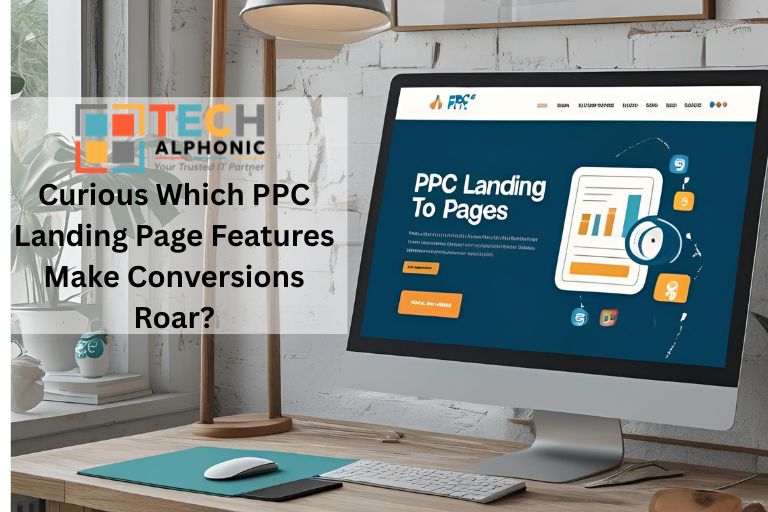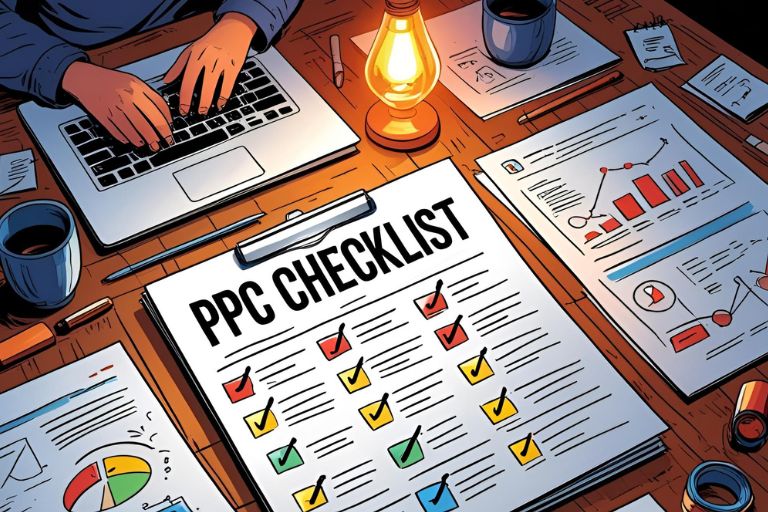Curious Which PPC Landing Page Features Make Conversions Roar? Here’s What Works!
How long ago did you last click a Google ad and say this page was exactly what I needed?
Probably not a lot because most of these pages are very old templates with generic headlines and a form no one wants to fill out.
Let the truth be told: PPC landing pages are the single biggest distance between the budget on ads and actual income.
At Tech Alphonic, we have spent years perfecting landing pages that don’t only look pretty but also convert. We have learned that if you really want to stand out, you have to throw out stale formulas and develop that which feels personal, persuasive, and frictionless.Today we break down how to create an effective PPC landing page step by step, with practical insights that you can start using today. No fluff; it’s just the stuff that works.
- Start With Laser-Focused Intent (Not Just Keywords)
Most of the fights marketers have are because of keyword selection. However, here’s a secret: if there is no clarity of intent, then the keyword is utterly meaningless for your search.
Before you start your headline or design your layout, start asking:
- What’s the problem that the visitor is trying to solve?
- What do they know already?
- What fears or objections will hold them back?
Pro Tip: Tailor your landing pages to suit each type of intent. Awareness-stage users need education. Decision-stage users need urgency and proof.
- Create a Headline That Stops the Scroll
Your headline must do three things immediately:
- Tell them they are at the right place.
- Speak to a pain or goal, specific.
- Hint at what they are going to get next.
Forget boring titles like:
“CRM Solution Software”
Try something a bit more magnetizing, like:
“Run Your Whole Business from One Dashboard—Free for 30 Days”
- Prove Visually That They Can Trust You
The right images can make or break your landing page. The human brain processes images 60,000x faster than text.
Here is the successful technique:
- Authentic pictures or screenshots. Every time, real product visuals will beat stock images.
- Annotated Image. Demonstrate exactly how your product solves the problem.
- Short demo videos. A 30-second walk-through beats a wall of text.
Avoid:
- Cheap stock photographs of smiling people in suits.
- Pixelated or low-quality images.
- Make Your Offer So Brilliant It Turns Out to Be Too Good to Be True
Most landing pages crawl under the bar here. They simply say, “Sign up for a demo” and hope for the best.
Make an offer that breaks inertia:
- Free trials, no credit card.
- Short-term available discounts and bonuses.
- Free consultation or analysis.
- Special guides or resources.
Pro Tip: Better pair your offer with urgency triggers:
- “Only 10 spots left this month”
- “Ends Friday at midnight”
- Engineer Trust Using Social Proofs and Guarantees
People don’t believe what you say, they believe what others say about you.
Here’s how to do layer proof:
- Client reviews (with names and photos)
- Star ratings or review score
- Client logos
- Times in the media
- Money-back guarantees and risk reversals
Example: “Trusted by 2,500+ small businesses. Rated 4.9/5 on Capterra.”
- Simplify the Conversion Path
Complications kill conversion-
- Hide top navigation.
- Ban all other links.
- Only use one clear call to action.
Rule of thumb: Every element should answer to one of these:
- Why should I care?
- Why should I trust you?
- What should I do next?
Call to Action examples:
- “Start My Free Trial”
- “Get My Instant Quote”
- “Reserve My Spot”
- Speed and Mobile Optimized
PPC gets about 60% of clicks through mobile. Slow or clogged experiences are an automatic loss of trust and conversion.
- Use lightweight code and compress the images.
- Test landing page speed using Google PageSpeed Insights.
- All keep forms and buttons thumb-friendly.
Goal: Under 3 seconds load time.
- Introduce Micro-Commitments
Instead of a complex form with 10 fields, break your procedure into smaller steps.
For example:
- Step 1: Type in email.
- Step 2: Answer 2 questions quickly.
- Step 3: Get your personal sneak peek demo.
As a result, psychologically every “yes” makes the following move easier.
- Use Cognitive Triggers That Drive Action
Below are three powerful psychological principles to interweave into your page:
- Anchoring: Show an original price next to your discounted price.
- Reciprocity: Offer free resources to build goodwill.
- Scarcity: Highlight limited availability or deadline-driven offers.
Example: “Normally $99/month-Today Only $49.”
- Test, Measure, improve: Repeat Relentlessly
PPC landing pages are never finished-
- Split-test headlines.
- Test images and videos.
- Try different CTA colors versus text.
- Study heatmaps to see where users click or drop off.
Pro Tip: Go big with changes vs. small tweaks: prioritize your big changes (headlines, offers, layouts) before small tweaks.
- Storyboard Your Landing Page
Here’s something different: Map your page as you would a story.
Your visitor is the hero. Your product is the guide. Your place is the journey.
Storyboard flow:
- Identify their problem.
- Show empathy and understanding.
- Introduce your solution.
- Prove it works.
- Make an irresistible offer.
- Erase friction.
- Call them to action.
FAQs about Creating Successful PPC Landing Pages
Q1: Does my landing page need to match my ad copy word for word?
Definitely! Message matching is key! If a user clicks on an ad for a “Free CRM Trial,” the landing page headline must reflect that offer.
Q2: How many fields should the form contain?
Minimize the fields. Best is 3-5 fields for most offers; if more information needs to be collected, do so in steps.
Q3: How frequently must I update landing pages?
Check your landing page performance every month. Change the offer, images, and testimonials at least once a quarter to avoid “banner blindness.”
Q4: Long or short landing page—which one is better?
Test it! In general, long pages that give plenty of proof work well for expensive or complex offers. Short landing pages convert best for simple offers.
Q5: What tools are good for creating landing pages that convert?
Some excellent options include:
- Unbounce
- Instapage
- Leadpages
- WordPress with Elementor
Tech Alphonic can also create custom landing pages tailored to your campaign goals.
Ready to Create Landing Pages That Really Convert?
If the PPC campaigns are only burning your budget and never converting, you need to change the strategy.
At Tech Alphonic, we partner with brands like yours to:
- Create compelling offers.
- Develop stunning pages that load fast.
- Test and optimize until conversions explode.
Let’s get those PPC results turned around. Call us today for a free consultation so that we can show you how your next landing page can become your best-performing asset.




